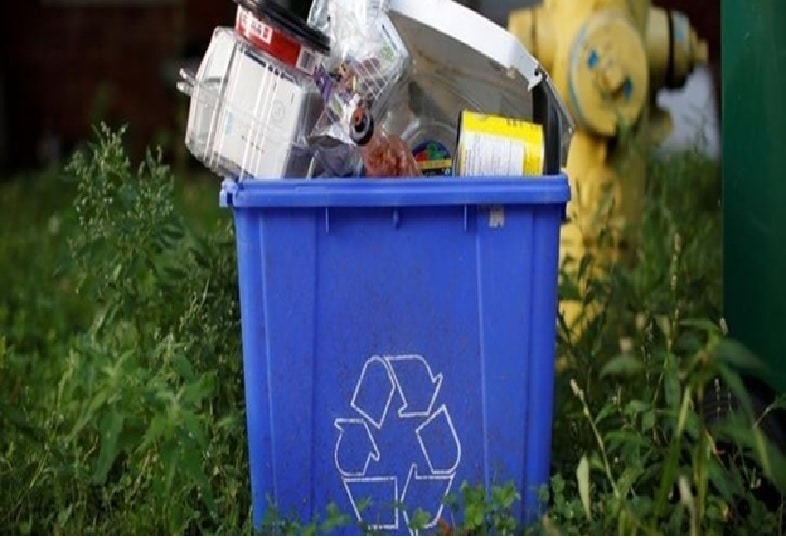Recycling Best Practices In The USA

Waste management is a big industry in the United States since it is one of the world’s largest producers of garbage. The waste industry in the United States manages municipal solid waste, industrial rubbish, and hazardous waste.
Many of the world’s largest waste management companies, like Waste Management Inc. and Republic Services, have their headquarters in the United States.
In 2019, the North American waste management industry was valued at 208 billion dollars, with the United States accounting for the lion’s share of the world market. Under the Resource Conservation and Recovery Act of 1976, the EPA (Environmental Protection Agency) controls rubbish regulations in the United States (RCRA).
Waste management methods are broken down into eight main categories, each of which is broken down into several subcategories. A few of the subcategories are source reduction and reuse, dumpster rentals, feeding animals and recycling, composting and fermentation. There are also landfills, incineration, and land application. Reducing and reusing things at home can help cut down on the amount of waste that people produce.
Techniques for getting rid of waste
Recycling and reusing
Resource recovery is the act of reusing useful junk that has been thrown away and finding a new use for them. These products are then processed to get or find minerals and resources, or to turn them into heat, electricity, or fuel that can be used.
A process called recycling is when you turn garbage into new goods in order to save energy and use less raw materials. It’s the third part of the “Retro,” “Reuse,” and “Recycle” waste hierarchy. Recycling tries to cut down on energy use, landfill space, air and water pollution, greenhouse gas emissions, and natural resource preservation for the future.
Landfills
There are many ways to get rid of dumpster rental these days, but bringing large quantities of junk to the landfill is the most common. In this type of waste disposal, the trash is buried in the ground.
It is called incineration/combustion when such junk is burned.
Incineration, also known as combustion, is a way to get rid of waste from cities and towns. Municipal solid wastes are burned at high temperatures, resulting in residue and gaseous pollutants.
Plasma is used for gasification.
Plasma gasification is another way to get rid of waste. Plasma is a gas that is very ionised and charged with electricity. Lighting is a type of plasma that has a temperature of more than 12,600 degrees F. Plasma torches that run at more than 10,000 degrees Fahrenheit are used in a vessel to make a gasification zone that reaches 3,000 degrees Fahrenheit. This zone is used to turn solid or liquid waste into syngas.
Plastics are the most hygienic and effective method of medical supplies.
The challenge of discovering a substitute that possesses all of plastic’s desirable features complicates and complicates the process of replacing plastic with alternative materials.
Biodegradable alternatives, such as some plastics, paper, or cardboard, may have a greater greenhouse gas impact due to the quantity of water or natural resources required to manufacture them.
Reusable plastic bags are more ecologically friendly than paper and cotton alternatives, but only in cities and nations with a well-structured waste management system that prevents leaking.
Plastic waste is a significant issue in waste management.
While plastic is durable in the long-term, if it is not treated properly, it may trap trash in our environment for millennia. While plastics deteriorate rapidly as a result of wear and tear, their polymer chains disintegrate only at extremely high temperatures, such as those seen during chemical recycling. However, only 15% of plastic garbage is currently recycled in the USA.
The ‘linear economy’ model, sometimes referred to as ‘take-make-discard,’ is still widely employed around the world, in which raw resources are used to build goods that are then discarded at the end of their brief shelf life.
Transitioning to a more sustainable model is not difficult if we remember the three Rs: Reduce, Reuse, and Recycle—in that order!
- Reducing overall consumption entails stewarding natural resources, consuming just what is absolutely necessary, and abstaining from unnecessary excess.
- It is vital to reuse things in order to extend the life of the goods we use. This requires fixing or upcycling our possessions in order to repurpose them.
- Recycling the waste that we all create is critical for completing the loop in a circular economic model.
Plastic garbage is resurrected.
The Alliance is committed to incorporating recycling into all systems of sustainable waste management. Recycling waste plastic and reusing it in production decreases the need for virgin plastics while enhancing the economic worth of our trash. Recent recycled plastic goods include furniture, roadways, packaging, and clothes.
You’ll need to invest in the necessary personnel and equipment to sort and handle plastic waste.
Plastics are classed into two categories: those that can be recycled easily and those that can be recycled but with more technical difficulty.
Simple-to-recycle plastics, such as PET found in the majority of bottles or HDPE found in pipes and containers, may be cleaned, crushed into a powder, melted, and extruded into pellets that can be reheated and remolded. This is referred to as mechanical recycling, and dumpsters can handle it.
Other difficult-to-recycle plastics, such as LDPE, polyethylene film, or contaminated plastics such as unwashed food containers, can be recycled using chemical recycling on a case-by-case basis. This is the process of altering the polymer structure of plastic and converting it into feedstock that may be utilized in place of virgin ingredients in the production of plastics.
The globe is recognizing that it is past time to address the problem of plastic waste. This includes fixing all deficiencies in our waste management systems. Currently, more than a third of the world’s population lacks adequate waste collection and disposal, as well as recycling facilities.
There is no such thing as a one-size-fits-all solution. It is not a question of switching from one single-use lifestyle to another; rather, it is a matter of altering our behaviors to strike a balance between convenience and sustainability and encouraging companies and governments to collaborate for the greatest environmental effects.
Businesses ranging from fashion to hospitality companies are pledging to be more circular by redesigning packaging or incorporating recycled materials; researchers are developing and improving new methods for manufacturing, sorting, and recycling plastics; and governments are reevaluating their waste management systems to make recycling more accessible to citizens.
Concurrently, other solutions must be devised and scaled. All of these activities contribute to the reduction of plastic waste in the environment and get us closer to a circular economy that values our trash. It’s a huge undertaking, but one that can be accomplished with ample assistance.





